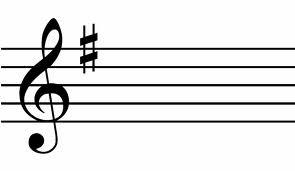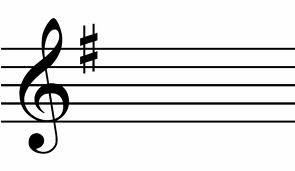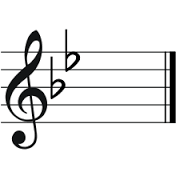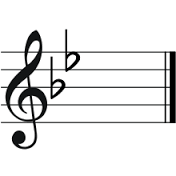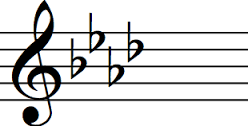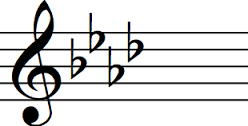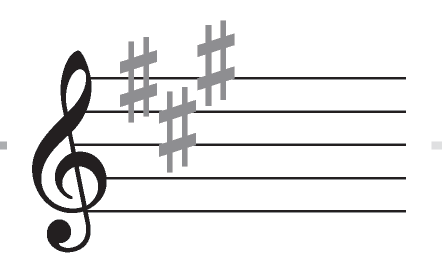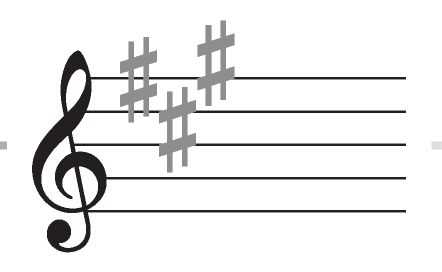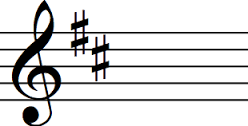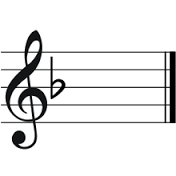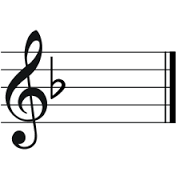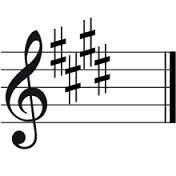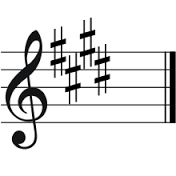Key Signatures And Their Relative Minor Keys

A key signature is a set of sharp, flat, and rarely, natural symbols placed together on the staff. To determine the name of a minor key, find the name of the key in major and then count backwards three half steps. Take the test below to see how good you are at naming the keys.
- 1.
Name the major key
- A.
E
- B.
D
- C.
G
- D.
F
Correct Answer
C. GExplanation
The major key is determined by the tonic note, which is the note that the key is based on. In this case, the tonic note is G, making the major key G major.Rate this question:
-
- 2.
Name the relative minor key
- A.
E
- B.
A
- C.
B
- D.
D
Correct Answer
A. EExplanation
The relative minor key of E is E minor. In music theory, the relative minor key is the key that shares the same key signature as its relative major key. In this case, the key of E major has four sharps (F#, C#, G#, and D#), and its relative minor key, E minor, also has the same four sharps in its key signature. Therefore, E is the correct answer as the relative minor key of E.Rate this question:
-
- 3.
Name the major key
- A.
Eb
- B.
Bb
- C.
Db
- D.
F
Correct Answer
B. BbExplanation
The major key being referred to in this question is Bb. In music theory, a major key is determined by its tonic, which is the note that the key is based on. In this case, Bb is the tonic note, and therefore the major key being named.Rate this question:
-
- 4.
Name the relative minor key
- A.
F
- B.
G
- C.
Bb
- D.
Eb
Correct Answer
B. GExplanation
The relative minor key of G is E minor. In music theory, the relative minor key is the key that shares the same key signature as the major key, but starts on a different note. In this case, G major has one sharp in its key signature (F#), and the relative minor key of E minor also has one sharp in its key signature (F#). Therefore, G is the correct answer as it is the relative minor key of G major.Rate this question:
-
- 5.
Name the major key
- A.
F
- B.
G
- C.
Eb
- D.
Ab
Correct Answer
D. AbExplanation
The major key is determined by the tonic note, which is the note that the key is based on. In this case, the tonic note is Ab. Therefore, the major key is Ab major.Rate this question:
-
- 6.
Name the relative minor key
- A.
Ab
- B.
F
- C.
Db
- D.
B
Correct Answer
B. FExplanation
The relative minor key of F is D minor. In music theory, the relative minor key is the key that shares the same key signature as its relative major key. In this case, F major has one flat in its key signature (Bb), and its relative minor key, D minor, also has one flat in its key signature. Therefore, F is the relative major key of D minor.Rate this question:
-
- 7.
Name the major key
- A.
B
- B.
A
- C.
C
- D.
D
Correct Answer
B. AExplanation
The major key that is being named in this question is A.Rate this question:
-
- 8.
Name the relative minor
- A.
F
- B.
F#
- C.
G
- D.
G#
Correct Answer
B. F#Explanation
The relative minor of F# is D#m. In music theory, the relative minor is the minor key that has the same key signature as the major key. In this case, F# major has six sharps in its key signature (F#, C#, G#, D#, A#, and E#), and its relative minor, D#m, also has the same six sharps in its key signature. Therefore, F# major and D# minor are considered relative keys.Rate this question:
-
- 9.
Name the major key
- A.
C
- B.
E
- C.
D
- D.
A
Correct Answer
C. DExplanation
The given notes C, E, D, and A are all from the C major scale. However, the note D is the major key in this case because it is the root note or tonic of the scale. In music theory, the major key is determined by the root note, which sets the tonal center and gives the scale its major sound.Rate this question:
-
- 10.
Name the relative minor
- A.
D
- B.
F#
- C.
G#
- D.
B
Correct Answer
D. BExplanation
The relative minor of a major key is the key that shares the same key signature but starts on the 6th degree of the major scale. In this case, the major key is D major, which has a key signature of F# and C#. The 6th degree of the D major scale is B, so the relative minor of D is B minor.Rate this question:
-
- 11.
Name the major key
- A.
F
- B.
G
- C.
A
- D.
B
Correct Answer
A. FExplanation
The correct answer is F because in music, a major key is determined by its tonic note, which is the note that the key is named after. In this case, the key is named F, indicating that F is the tonic note and the major key.Rate this question:
-
- 12.
Name the relative minor
- A.
F
- B.
D
- C.
Eb
- D.
Bb
Correct Answer
B. DExplanation
The relative minor of a major key is the key that shares the same key signature but starts on the 6th scale degree. In this case, the major key is F, so the relative minor would be D.Rate this question:
-
- 13.
Name the major key
- A.
E
- B.
F#
- C.
G
- D.
B
Correct Answer
A. EExplanation
The given notes E, F#, G, and B form a major chord in the key of E major. In a major key, the pattern of whole and half steps is whole, whole, half, whole, whole, whole, half. Starting on E and following this pattern, we get the notes E, F#, G#, A, B, C#, and D#. Therefore, the major key represented by the given notes is E major.Rate this question:
-
- 14.
Name the relative minor key
- A.
C
- B.
C#
- C.
D
- D.
D#
Correct Answer
B. C#Explanation
The relative minor key of C is C#. In music theory, the relative minor key is the key that shares the same key signature as its relative major key. In this case, C# has the same key signature as its relative major key, which is E major. This means that both C# minor and E major have the same set of notes, but they start and resolve on different tonal centers.Rate this question:
-
Quiz Review Timeline +
Our quizzes are rigorously reviewed, monitored and continuously updated by our expert board to maintain accuracy, relevance, and timeliness.
-
Current Version
-
Jun 22, 2023Quiz Edited by
ProProfs Editorial Team -
Feb 09, 2017Quiz Created by
Doug Boughter
 Back to top
Back to top



